Category: Recommended Reading
Sunday Poem
Where Does Winter Grow
Where does winter
grow — among your
exhales that will
never be enough? I
see now that I have
been wrong about
everything, and
how breathing needs
love to sustain
it — a life spent
promised to uncertainty,
moonlight harvesting
my dreams between
fantasy and failure,
divine care letting
you slip away, a
moment lost each
time I remember
what might have
been true.
by Robert Darlington
from Poetry Feast
The Language of Women
Rachel York in Guernica:
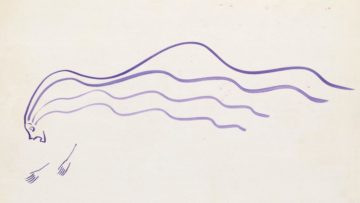 In his essay Sexual Objectification, Timo Jütten explains how sexual objectification teaches men and women to assume roles as superiors and subordinates, roles that disadvantage women and leave them vulnerable to gender-specific harms, such as sexual assault and rape. While I knew this already, it is a small relief to read it in print. Most women instinctively know that their bodies are a hair’s breadth away from violence. The artist Marina Abramović demonstrated this by laying seventy-two objects on a table—a tube of lipstick, a feather, a knife, and a gun—and invited gallery viewers to do whatever they wanted to her for six hours. At first the people were shy, presenting her with the flower, kissing her, draping her in cloth; then as the hours ticked off, one man snipped off her clothes with the scissors so that she was bare, and another sliced her with the knife. Someone else picked up the gun from the table, wrapped her hand around it, and pointed it at her neck. At the end she stood up to leave, bare, and bleeding, and the audience fled.
In his essay Sexual Objectification, Timo Jütten explains how sexual objectification teaches men and women to assume roles as superiors and subordinates, roles that disadvantage women and leave them vulnerable to gender-specific harms, such as sexual assault and rape. While I knew this already, it is a small relief to read it in print. Most women instinctively know that their bodies are a hair’s breadth away from violence. The artist Marina Abramović demonstrated this by laying seventy-two objects on a table—a tube of lipstick, a feather, a knife, and a gun—and invited gallery viewers to do whatever they wanted to her for six hours. At first the people were shy, presenting her with the flower, kissing her, draping her in cloth; then as the hours ticked off, one man snipped off her clothes with the scissors so that she was bare, and another sliced her with the knife. Someone else picked up the gun from the table, wrapped her hand around it, and pointed it at her neck. At the end she stood up to leave, bare, and bleeding, and the audience fled.
More here.
Edgar Allan Poe exposed scientific hoaxes, and invented his own
Bob Blaisdell in The Christian Science Monitor:
 Readers of Edgar Allan Poe’s most famous prose and poetry might be unaware of how often he wrote about science. As John Tresch explains in “The Reason for the Darkness of the Night: Edgar Allan Poe and the Forging of American Science,” in the late 1840s, near the end of his life, Poe had established for himself “a unique position as fiction writer, poet, critic, and expert on scientific matters – crossing paths with and learning from those who were producing the ‘apparent miracles’ of modern science.”
Readers of Edgar Allan Poe’s most famous prose and poetry might be unaware of how often he wrote about science. As John Tresch explains in “The Reason for the Darkness of the Night: Edgar Allan Poe and the Forging of American Science,” in the late 1840s, near the end of his life, Poe had established for himself “a unique position as fiction writer, poet, critic, and expert on scientific matters – crossing paths with and learning from those who were producing the ‘apparent miracles’ of modern science.”
Poe exposed pseudoscientific hoaxes – and then, to get his own writing noticed, created them himself. He finally received critical acclaim for his now-classic short stories, among them “The Tell-Tale Heart” (which Tresch describes as “an act of violent irrationality [detailed] in the language of scientific method”) and “The Raven” (which Poe himself proclaimed “the greatest poem that ever was written”).
Tresch has painted a full landscape of the journalism of the time, describing the conflicts between writers who made serious scientific observations and those eager to sensationalize or misrepresent new discoveries. “Poe saw his age’s many humbugs and its ‘men of science’ pushing for foolproof forms of scientific authority as secret partners,” writes Tresch. “Together they were establishing the modern matrix of entertainment and science, doubt and certainty. Those who successfully denounced the tricks of charlatans were precisely those with the skills to make themselves believed.”
More here.
Saturday, November 27, 2021
The Wall Street Consensus at COP26
 Daniela Gabor in Phenomenal World:
Daniela Gabor in Phenomenal World:
If central banks were ambitious about shrinking private lending to carbon activities, the COP26 press release would have announced plans to explicitly penalize dirty lending in both monetary policy and regulatory frameworks, and specified an ambitious timeline for doing so. These plans would upgrade the Bank of England’s “carrots first, sticks later” approach to decarbonizing its corporate bond purchases (which first rewards, and only later envisages penalizing) to a carrots and sticks approach better aligned with the climate urgency. By rapidly ending the historical carbon bias hardwired into collateral frameworks and unconventional corporate bond purchases, as they have repeatedly promised to do, central banks would ensure that the cost of capital for high carbon activities increases significantly, redirecting financial flows to green activities.
To minimize dirty arbitrage (fossil assets shifting across private portfolios), the central banks might announce the inclusion of private equity and other shadow banks within the scope of the new “carrots and sticks” regime. To further reduce transition risks and preserve an orderly transition, they could recommend new accounting rules for stranded assets (suspending mark to market) in systemic institutional portfolios.
Central banks would also address the structural shortage of green assets by calling on fiscal authorities to collectively develop new regimes of green macro-coordination. The accelerated issuance of green sovereign bonds could absorb the flow of capital leaving dirty activities, and finance nationally-developed green public investment plans and green industrial policies. This might come alongside increased taxation of conspicuous luxury consumption and avoid carbon shock therapy by carefully deploying carbon prices without allowing them to dictate the pace and direction of decarbonization.
More here.
Memes and the Left
Picking Winners
 Alyssa Battistoni in Sidecar:
Alyssa Battistoni in Sidecar:
The annual UNFCCC Conference of the Parties, which convenes the 197 states and territories which have signed on to the UN Framework Convention on Climate Change, is one of the anchoring events of climate politics discourse, alongside the release of IPCC reports and increasingly regular occurrence of climate-fueled natural disasters. Since the first was held in Berlin in 1995, when atmospheric carbon levels were around 358 parts per million (today they hover around 414), a steady procession of COPs have produced a great deal of geopolitical drama, but have not yet managed to reduce carbon emissions.
In 1997 there was the fight over the Kyoto Protocol, widely criticized for concessions to the US insistence on market mechanisms; followed in 2001 by George W. Bush’s announcement that he would not implement it anyway. In 2009, many expected that Barack Obama’s election would clear the way for a legally binding agreement at COP15, in Copenhagen – officially branded ‘Hopenhagen’ by the UN. Instead, negotiations nearly collapsed over bitter disagreement between developed and developing countries, and eventually culminated in a weak deal brokered behind closed doors by Obama and Wen Jiabao. Six years later, the Paris agreement was hailed as a world-historic triumph, even though the voluntary commitments made by individual member states failed to add up to the agreement’s stated goals. As climate activists pointed out, and even the text of the agreement acknowledged, although the agreement set a goal of limiting global warming to ‘well below 2º C’, the aggregated commitments would result in an estimated 3º of warming. Nor were the Paris Accords complete: they dictated that signatories update their pledges five years later. This was the key task set for COP26 in Glasgow.
More here.
Writing in medias res
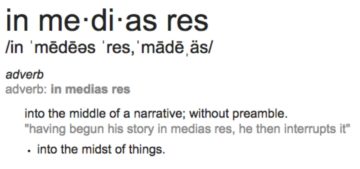 Adam Tooze over at site Chartbook:
Adam Tooze over at site Chartbook:
I’ve experienced big history up close before. The intifada in Palestine in the 1980s. The collapse of the communist regime in the GDR in 1989. But in its personal impact COVID was far more direct, both as a shadowy threat and in its immediate impact on my life, that of my family and immediate community. For me the crisis was compelling also in the sense that I was enrolled in writing and thinking about it with no let up and in real time.
Of course, it is not just the immediate events you are in the thick of. We are all immersed in our own inner, mental worlds. Books relate to each other. They form a kind of internal conversational circle. And, after a while, other voices chime in.
In the fall of 2019, months before the pandemic began to circulate in earnest, Perry Anderson subjected some of my work to a searching review in the pages of New Left Review. He observed that delivering narrative as if in medias res is a habit of mine.
His remark has been hanging over me ever since.
Anderson is right. I generally prefer a narrative mode that plunges you in to the middle of things, rather than beginning at the beginning. The in medias res approach is more engaging. It catches the reader’s attention from the start because they have to scramble to orientate themselves. It is also more transparent in its artifice. I prefer the deliberate and obvious break in the linear flow produced by a flashback – “now we interrupt the action to explain something you really need to know” – to the apparent simplicity and calm of “beginning at the beginning”, which in its own way begs all the same questions, but smuggles the answers into the smooth flow of a linear narrative.
As Anderson suggested, this stylistic preference also reflects a certain understanding of politics and agency and their relationship to history, which might broadly be described as Keynesian left-liberalism. As he puts it, “a ‘situational and tactical’ approach to the subject in hand determines entry to” the subject matter “in medias res”.
More here.
A Haunting Memoir About Life After A Bear Attack
Jennifer Szalai at the New York Times:
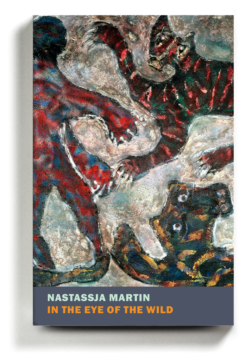 “Attack” didn’t seem like the right word, and neither did “mauling.” In Nastassja Martin’s new book, “In the Eye of the Wild,” she calls it “combat” before eventually settling on “the encounter between the bear and me.” She suggests that what happened on Aug. 25, 2015, in the mountains of Kamchatka, in eastern Siberia, wasn’t simply a matter of a fierce animal overpowering a terrified human — though Martin almost died before she pulled out the ice ax she was carrying and drove it into the bear’s leg. Waiting for help, she saw that everything was red: her face, her hands, the ground.
“Attack” didn’t seem like the right word, and neither did “mauling.” In Nastassja Martin’s new book, “In the Eye of the Wild,” she calls it “combat” before eventually settling on “the encounter between the bear and me.” She suggests that what happened on Aug. 25, 2015, in the mountains of Kamchatka, in eastern Siberia, wasn’t simply a matter of a fierce animal overpowering a terrified human — though Martin almost died before she pulled out the ice ax she was carrying and drove it into the bear’s leg. Waiting for help, she saw that everything was red: her face, her hands, the ground.
Martin had been transformed into a “blurred figure,” she writes, her torn face “slicked over with internal tissue,” as if a birth had taken place, “for it is manifestly not a death.”
more here.
Interview with Nastassja Martin
‘Catullus: Shibari Carmina’ by Isobel Williams
Colin Burrow at the LRB:
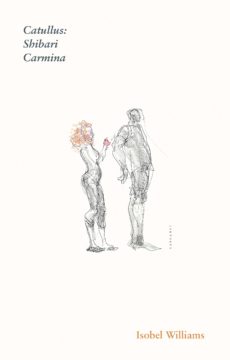 What an innocent I am. Until I read Isobel Williams’s reinventions of Catullus as Shibari Carmina I would have guessed that ‘shibari’ was an exotic seasoning, or perhaps a rare type of plant. Having now looked it up online and averted my gaze from the pictures (what ads will I get served in future? Will my IT department shop me?), I learn it’s a form of Japanese bondage, which involves consenting adults and carefully calibrated widths and strengths of jute rope. I’m sure the jute makes all the difference, and that nylon would be quite horrid. Or maybe just more horrid. The person doing the tying up in shibari is regarded as the servant of the person being trussed, and the loops of jute are defined in a series of elegant moves as though the whole thing were a martial art, so the activity inverts expectations about power relations even while seeming to make them pretty darn obvious.
What an innocent I am. Until I read Isobel Williams’s reinventions of Catullus as Shibari Carmina I would have guessed that ‘shibari’ was an exotic seasoning, or perhaps a rare type of plant. Having now looked it up online and averted my gaze from the pictures (what ads will I get served in future? Will my IT department shop me?), I learn it’s a form of Japanese bondage, which involves consenting adults and carefully calibrated widths and strengths of jute rope. I’m sure the jute makes all the difference, and that nylon would be quite horrid. Or maybe just more horrid. The person doing the tying up in shibari is regarded as the servant of the person being trussed, and the loops of jute are defined in a series of elegant moves as though the whole thing were a martial art, so the activity inverts expectations about power relations even while seeming to make them pretty darn obvious.
more here.
Saturday Poem
Author’s Note:
In January 1991, I was honored to have several poems published in Diario Latino, an opposition newspaper I El Salvador. In February 1991, Diario Latino was burned down, on the behalf and the behest of the same forces the newspaper had opposed: the government, the military, the death squads. The newspaper rebuilt itself, publishing only a few pages a day, till eventually Diario Latino was back in full strength. In February 1992, on the first anniversary of the fire, Diario Latino published the Spanish version of the following poem; . . . The poem was written in response to the fire and in tribute to the courage of the people who run this newspaper, though the poem applies as well to any people anywhere in the world whose voices rise above the flames. —Martín Espada
When Songs become Water
[Cuando Los Cantos Se Vuelven Agua]
Where dubbed commercials
sell the tobacco and alcohol
of a far winter metropolis,
where the lungs of night
cough artillery shots
into the ears of sleep,
where strikers with howls
stiff on their faces
and warnings pinned to their shirts
are harvested from garbage heaps,
where olive uniforms keep watch
over the plaza
from a nest of rifle eyes and sandbags,
where the government party
campaigns chanting through loudspeakers
that this country
will be the common grave of the reds,
where the newsprint of mutiny
is as medicine
on the fingertips,
and the beat of the press printing mutiny
is like the pounding of tortilla in the hands.
Stephen Sondheim, Titan of the American Musical
Bruce Weber in The New York Times:
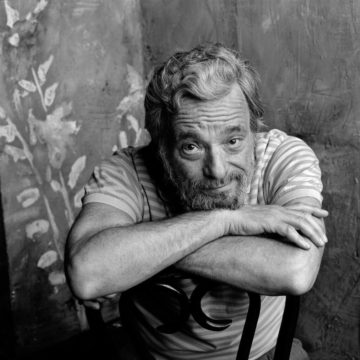 Stephen Sondheim, one of Broadway history’s songwriting titans, whose music and lyrics raised and reset the artistic standard for the American stage musical, died early Friday at his home in Roxbury, Conn. He was 91. His lawyer and friend, F. Richard Pappas, announced the death. He said he did not know the cause but added that Mr. Sondheim had not been known to be ill and that the death was sudden. The day before, Mr. Sondheim had celebrated Thanksgiving with a dinner with friends in Roxbury, Mr. Pappas said.
Stephen Sondheim, one of Broadway history’s songwriting titans, whose music and lyrics raised and reset the artistic standard for the American stage musical, died early Friday at his home in Roxbury, Conn. He was 91. His lawyer and friend, F. Richard Pappas, announced the death. He said he did not know the cause but added that Mr. Sondheim had not been known to be ill and that the death was sudden. The day before, Mr. Sondheim had celebrated Thanksgiving with a dinner with friends in Roxbury, Mr. Pappas said.
An intellectually rigorous artist who perpetually sought new creative paths, Mr. Sondheim was the theater’s most revered and influential composer-lyricist of the last half of the 20th century, if not its most popular. His work melded words and music in a way that enhanced them both. From his earliest successes in the late 1950s, when he wrote the lyrics for “West Side Story” and “Gypsy,” through the 1990s, when he wrote the music and lyrics for two audacious musicals, “Assassins,” giving voice to the men and women who killed or tried to kill American presidents, and “Passion,” an operatic probe into the nature of true love, he was a relentlessly innovative theatrical force.
More here.
A Brief Scientific History of Glass
Carolyn Wilke in Smithsonian:
 Today, glass is ordinary, on-the-kitchen-shelf stuff. But early in its history, glass was bling for kings. Thousands of years ago, the pharaohs of ancient Egypt surrounded themselves with the stuff, even in death, leaving stunning specimens for archaeologists to uncover. King Tutankhamen’s tomb housed a decorative writing palette and two blue-hued headrests made of solid glass that may once have supported the head of sleeping royals. His funerary mask sports blue glass inlays that alternate with gold to frame the king’s face.
Today, glass is ordinary, on-the-kitchen-shelf stuff. But early in its history, glass was bling for kings. Thousands of years ago, the pharaohs of ancient Egypt surrounded themselves with the stuff, even in death, leaving stunning specimens for archaeologists to uncover. King Tutankhamen’s tomb housed a decorative writing palette and two blue-hued headrests made of solid glass that may once have supported the head of sleeping royals. His funerary mask sports blue glass inlays that alternate with gold to frame the king’s face.
In a world filled with the buff, brown and sand hues of more utilitarian Late Bronze Age materials, glass — saturated with blue, purple, turquoise, yellow, red and white — would have afforded the most striking colors other than gemstones, says Andrew Shortland, an archaeological scientist at Cranfield University in Shrivenham, England. In a hierarchy of materials, glass would have sat slightly beneath silver and gold and would have been valued as much as precious stones were. But many questions remain about the prized material. Where was glass first fashioned? How was it worked and colored, and passed around the ancient world? Though much is still mysterious, in the last few decades materials science techniques and a reanalysis of artifacts excavated in the past have begun to fill in details.
Friday, November 26, 2021
Nature Is Becoming a Person
Justin E. H. Smith in Foreign Policy:

Inbred, feral, and hungry, the “cocaine hippos” of Colombia took to the rainforests after liberation from Pablo Escobar’s menagerie at the time of the drug kingpin’s death in 1993. From an initial population of four, the hippos are now a fast-growing nuisance numbering over 100. Yet they are also the stuff of legend and an obvious favorite in a popular culture ever in search of quirky, new animal mascots.
In part because of their singular fame, a symbolic impediment to treating them as a common invasive pest was introduced in October, when a U.S. judge recognized their status as “interested persons,” which at least (in principle) enables them to exercise their legal right to obtain information in a U.S. legal trial. This ruling is not enforceable in Colombia, but it is a milestone in U.S. law and pushes the idea that the Earth is a political community composed of all sorts of “persons”—only some of whom are human.
Escobar’s hippos are far from unique (at least with respect to their claim to personhood).
More here.
Misconduct in Bioscience Research: a 40-year perspective
Jeffrey S. Flier at Project Muse:
 Fraud in biomedical research, though relatively uncommon, damages the scientific community by diminishing the integrity of the ecosystem and sending other scientists down fruitless paths. When exposed and publicized, fraud also reduces public respect for the research enterprise, which is required for its success. Although the human frailties that contribute to fraud are as old as our species, the response of the research community to allegations of fraud has dramatically changed. This is well illustrated by three prominent cases known to the author over 40 years. In the first, I participated as auditor in an ad hoc process that, lacking institutional definition and oversight, was open to abuse, though it eventually produced an appropriate result. In the second, I was a faculty colleague of a key participant whose case helped shape guidelines for management of future cases. The third transpired during my time overseeing the well-developed if sometimes overly bureaucratized investigatory process for research misconduct at Harvard Medical School, designed in accordance with prevailing regulations. These cases illustrate many of the factors contributing to fraudulent biomedical research in the modern era and the changing institutional responses to it, which should further evolve to be more efficient and transparent.
Fraud in biomedical research, though relatively uncommon, damages the scientific community by diminishing the integrity of the ecosystem and sending other scientists down fruitless paths. When exposed and publicized, fraud also reduces public respect for the research enterprise, which is required for its success. Although the human frailties that contribute to fraud are as old as our species, the response of the research community to allegations of fraud has dramatically changed. This is well illustrated by three prominent cases known to the author over 40 years. In the first, I participated as auditor in an ad hoc process that, lacking institutional definition and oversight, was open to abuse, though it eventually produced an appropriate result. In the second, I was a faculty colleague of a key participant whose case helped shape guidelines for management of future cases. The third transpired during my time overseeing the well-developed if sometimes overly bureaucratized investigatory process for research misconduct at Harvard Medical School, designed in accordance with prevailing regulations. These cases illustrate many of the factors contributing to fraudulent biomedical research in the modern era and the changing institutional responses to it, which should further evolve to be more efficient and transparent.
More here.
Is society coming apart?
Jill Lepore in The Guardian:
 In March 2020, Boris Johnson, pale and exhausted, self-isolating in his flat on Downing Street, released a video of himself – that he had taken himself – reassuring Britons that they would get through the pandemic, together. “One thing I think the coronavirus crisis has already proved is that there really is such a thing as society,” the prime minister announced, confirming the existence of society while talking to his phone, alone in a room.
In March 2020, Boris Johnson, pale and exhausted, self-isolating in his flat on Downing Street, released a video of himself – that he had taken himself – reassuring Britons that they would get through the pandemic, together. “One thing I think the coronavirus crisis has already proved is that there really is such a thing as society,” the prime minister announced, confirming the existence of society while talking to his phone, alone in a room.
All this was very odd. Johnson seemed at once frantic and weak (not long afterwards, he was admitted to hospital and put in the intensive care unit). Had he, in his feverishness, undergone a political conversion? Because, by announcing the existence of society, Johnson appeared to renounce, publicly, something Margaret Thatcher had said in an interview in 1987, in remarks that are often taken as a definition of modern conservatism. “Too many children and people have been given to understand ‘I have a problem, it is the government’s job to cope with it!’” Thatcher said. “They are casting their problems on society, and who is society? There is no such thing!” She, however, had not contracted Covid-19.
Of course, there is such a thing as society. The question now is how the pandemic has changed it. Speculating about what might happen next requires first deciphering these statements, and where they came from.
More here.
Oscar Peterson gives Dick Cavett a Virtuosic Piano Demonstration
Listening In 2021
Amanda Petrusich at The New Yorker:
 I thought often about something the saxophonist Pharoah Sanders said, after my colleague Nathaniel Friedman asked him what he’d been listening to: “I haven’t been listening to anything.” He eventually elaborated: “I listen to things that maybe some guys don’t. I listen to the waves of the water. Train coming down. Or I listen to an airplane taking off.”
I thought often about something the saxophonist Pharoah Sanders said, after my colleague Nathaniel Friedman asked him what he’d been listening to: “I haven’t been listening to anything.” He eventually elaborated: “I listen to things that maybe some guys don’t. I listen to the waves of the water. Train coming down. Or I listen to an airplane taking off.”
I like that way of thinking—gently separating the idea of listening from the purposeful consumption of so-called music. There has always been a lot of beautiful sound in the world, things so plainly lovely that it feels humiliating even to type them out: songbirds at sunrise, a creek after a storm, boots on a gravel driveway, a blooming bush beset by bumblebees. When I wasn’t using my stereo, I sang made-up tunes to my daughter—badly—and watched her discover her wild, throaty cackle. In the predawn darkness, I listened happily as she cooed to herself in her bassinet. I found that my partner has a secret voice—higher-pitched, goofier, almost quaking with joy—that he uses when talking to a baby. Those experiences colored the way I heard and metabolized new records. I found myself pulled toward albums that were elemental, tender, free—music that felt genuinely of the world and not like a mediated reflection of it.
more here.
Snail Mail “Madonna”
